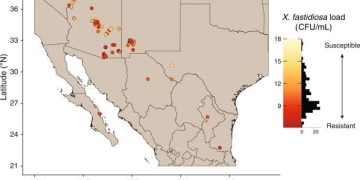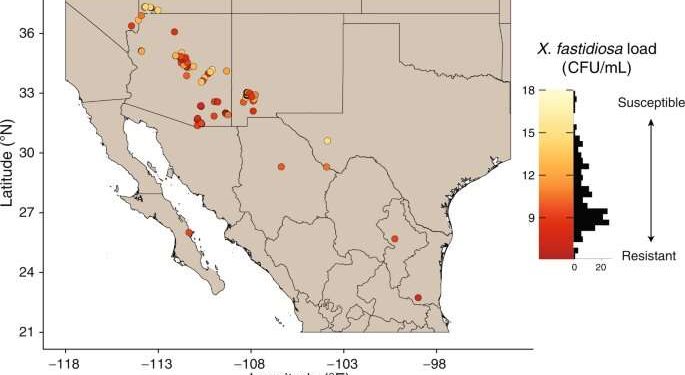This article explores a recent study that unveils a potential breakthrough in grapevine disease management, offering hope to farmers, agronomists, agricultural engineers, farm owners, and scientists involved in the field of agriculture. By analyzing the latest data from reliable sources, we delve into the details of this discovery and its potential implications for the future of grapevine cultivation.
Grapevines are susceptible to various diseases that can significantly impact crop yield and quality. However, a recent study published in the journal Nature Genetics has revealed a potential breakthrough in grapevine disease management that could transform the way these diseases are controlled. According to the research conducted by a team of scientists at a leading agricultural institute, a novel gene variant has been identified that provides natural resistance against a common and destructive grapevine disease known as Pierce’s disease.
Pierce’s disease, caused by the bacterium Xylella fastidiosa, has been a major concern for grapevine growers worldwide, leading to substantial economic losses. Traditional management strategies involve the use of chemical treatments, which are often costly and environmentally detrimental. However, this newly discovered gene variant offers an exciting alternative approach that could revolutionize grapevine disease management.
The researchers conducted extensive genomic analyses of grapevine varieties and identified a specific gene variant that appears to confer natural resistance to Pierce’s disease. This finding opens up new possibilities for the development of disease-resistant grapevine varieties through targeted breeding or genetic engineering techniques. By incorporating this gene variant into cultivated grapevine varieties, farmers could potentially reduce their reliance on chemical treatments and minimize the impact of Pierce’s disease on their crops.
The implications of this breakthrough extend beyond grapevine cultivation. Xylella fastidiosa affects a wide range of other crops, including citrus, olive, and almond trees. Therefore, the development of disease-resistant grapevine varieties could serve as a foundation for similar advancements in disease management across multiple agricultural sectors.
It is important to note that further research and rigorous field trials are needed to validate the efficacy and safety of using this gene variant in practical applications. However, the potential offered by this discovery is highly promising and paves the way for more sustainable and environmentally friendly approaches to disease control in agriculture.
In conclusion, the recent breakthrough in grapevine disease management, as revealed in the study, holds immense potential for farmers, agronomists, agricultural engineers, farm owners, and scientists working in the field of agriculture. By harnessing the power of genetic resistance, we may be able to reduce the reliance on chemical treatments and develop more resilient crops. This discovery not only offers hope for the grapevine industry but also serves as a stepping stone for future advancements in disease management across various agricultural sectors.
Tags: grapevine diseases, Pierce’s disease, Xylella fastidiosa, disease resistance, sustainable agriculture, genetic engineering, crop management, agricultural research































